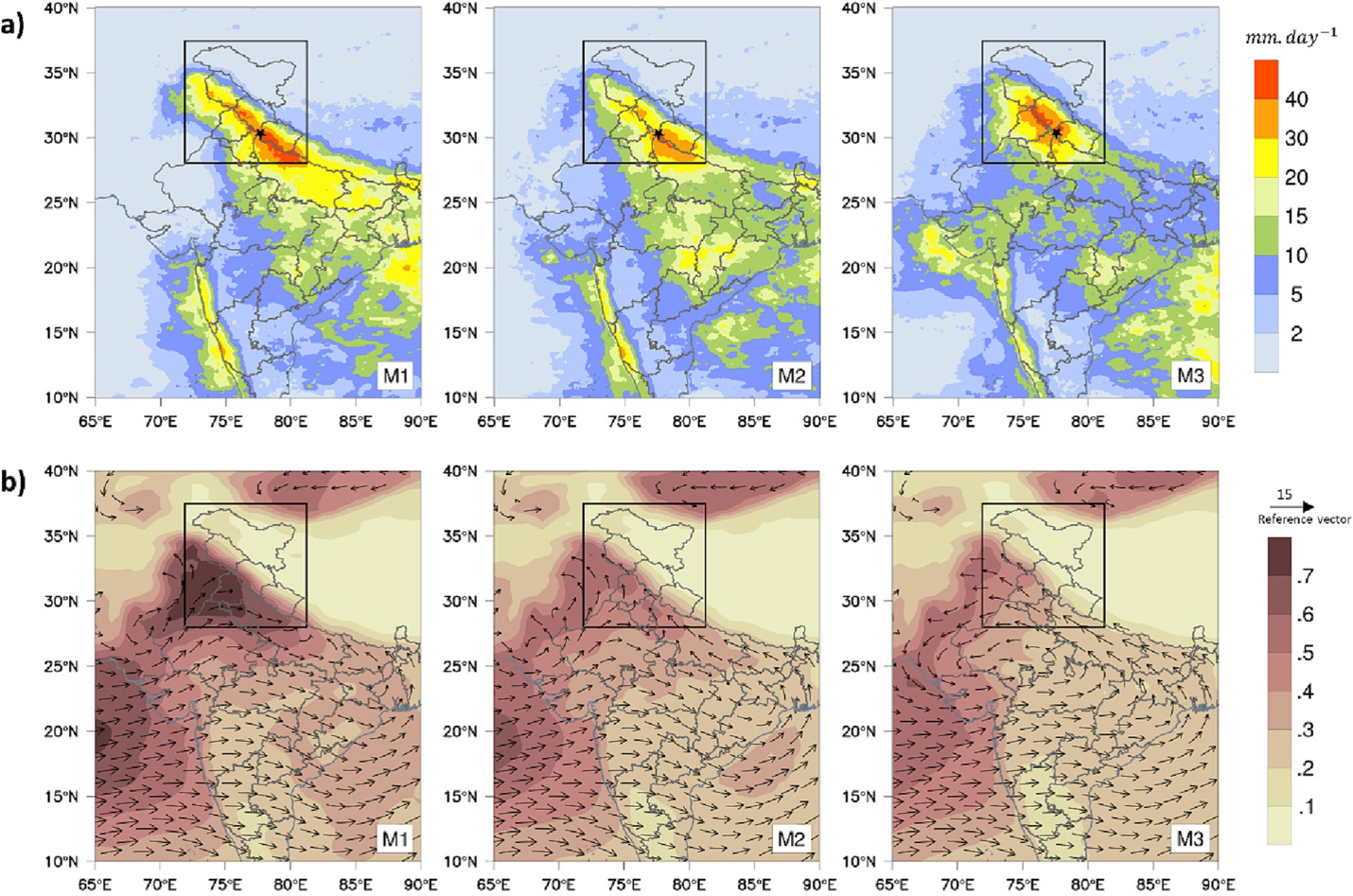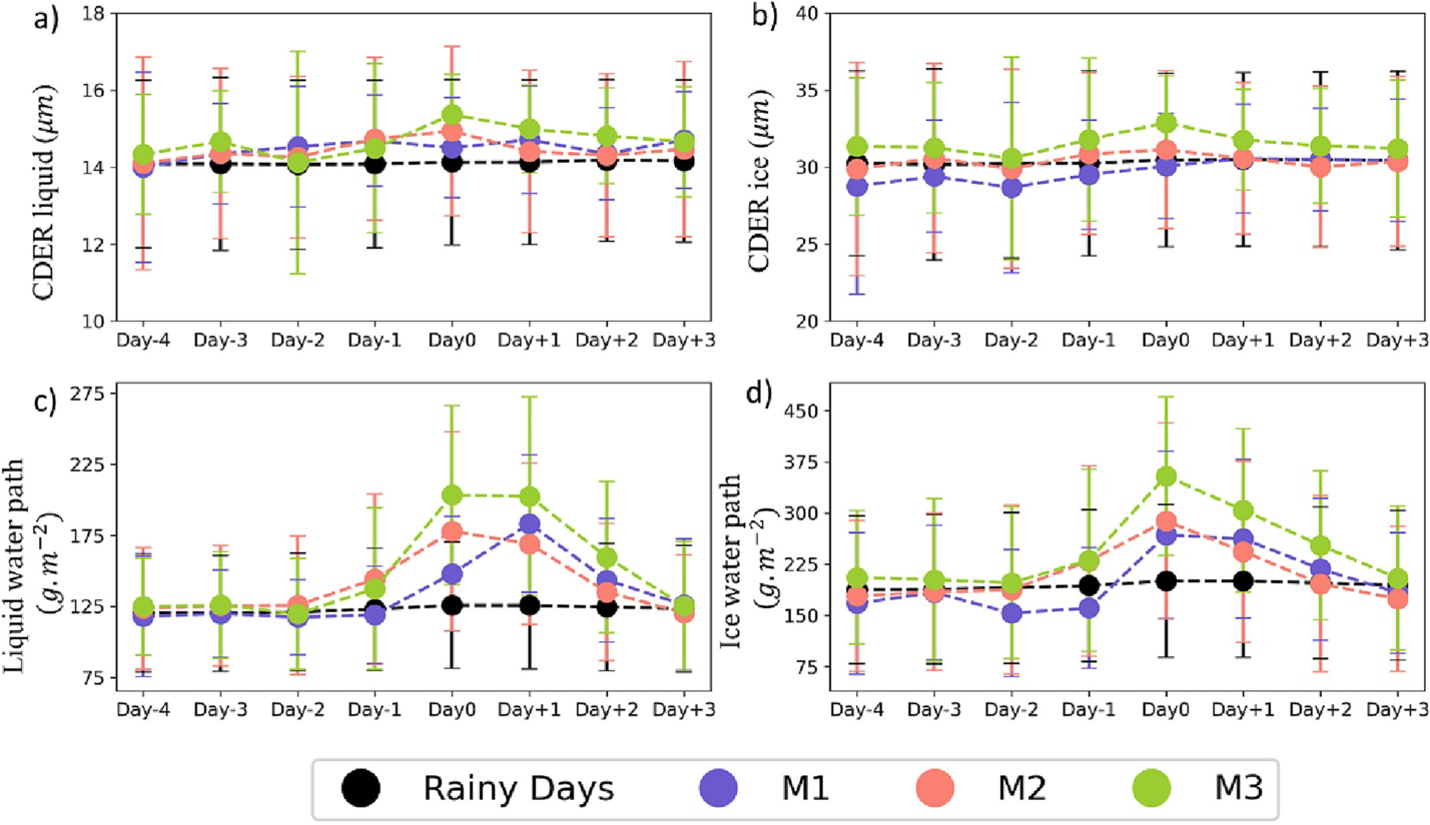CW3E Publication Notice
Aerosol-heavy precipitation relationship within monsoonal regimes in the Western Himalayas
April 26, 2023
A new paper entitled Aerosol-heavy precipitation relationship within monsoonal regimes in the Western Himalayas was recently published in the Atmospheric Research authored by CW3E postdoc Suma Battula, Steven Siems (Monash University), Arpita Mondal (IIT Bombay) and Subimal Ghosh (IIT Bombay). We used independent dynamical regimes from a previous study (Battula et al. 2022) and derived correlations between aerosols and heavy precipitation within monsoonal regimes – M1 (westerly), M2 (westerly + easterly) and M3 (easterly) in Western Himalayas. Additionally, the influences from meteorological covariates on these correlations were eliminated using partial correlation analysis.
Figure 1: Figure 5 from Battula et al. (2023). Composites of a) Precipitation (mm.day -1 ), b) AOD from MERRA2 reanalysis and winds at 850 hPa (m.s -1 ) for heavy precipitation events (HPEs) in monsoonal regimes M1, M2 and M3. The black star represents an arbitrary location 30 N, 77E where it rained heavily in all the regimes.
The moisture convergence during strong monsoon circulation favors the buildup of aerosols through low-level westerlies for HPEs in M1 (Figure 1). On the other hand, moisture convergence in M2 under weak monsoon circulation increases the mixing of low-level polluted westerlies with relatively cleaner easterlies, decreasing the AOD and hence weakening the relationship between AOD and precipitation. Thus, aerosol-precipitation relations can either be underestimated or overestimated if the influence of covariates is not eliminated. The overall partial correlation coefficient between aerosols and heavy precipitation is 0.17 in M1 and M2 but insignificant in M3.
Figure 2: Figure 8 from Battula et al. (2023). Temporal evolution of a) cloud droplet effective radius of liquid and b) ice phase in (μm), c) Liquid water path (g.m -2 ), d) Ice water path (g.m -2 ), from day − 4 to day +3 of HPEs in M1, M2 and M3 regimes.
Further, we found that M1, with a highly polluted environment, has the least cloud water path, droplet size with narrow size distribution than M2/M3 (Figure 2). Moreover, we did not find any significant correlation between AOD and cloud properties in the ice phase in any of the regimes. Therefore, the cold phase microphysical processes crucial for heavy precipitation are less sensitive to changes in the aerosols. Our findings imply that dynamical changes result in distinct aerosol-heavy precipitation relations and microphysical processes causing heavy precipitation in orographic regions such as Western Himalayas.
Battula, S. B., Siems, S., & Mondal, A. (2022). Dynamical and Thermodynamical Interactions in Daily Precipitation Regimes in the Western Himalayas. International Journal of Climatology ,42(9), 4909–4924. doi: https://doi.org/10.1002/joc.7511
Battula, S. B., Siems, S., Mondal, A., & Ghosh, S. (2023). Aerosol-Heavy Precipitation Relationship within Monsoonal Regimes in the Western Himalayas. Atmospheric Research, 288, 106728. doi: https://doi.org/10.1016/j.atmosres.2023.106728


